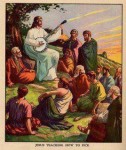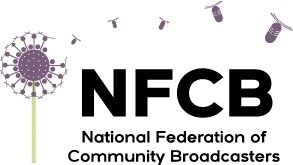Reach down, pick up,
have faith, live right
If you believe signs following, the snake will not bite
- Kate Campbell “Signs Following.”
This month in Middlesboro, Kentucky another snake handling preacher died after a rattlesnake that should have been hibernating said “enough is enough!” and bit him during a church service. The “Signs Following" pastor was a third generation handler and a well known proselytizer who had appeared on National Geographic television and wrote an op-ed piece in the Wall Street Journal defending the practice. His death will not be a setback for his followers….it will most likely inspire them to even more fervent faith.
Ever since the Great Religious Revival of 1787-1805, which was also a time of increased national expansion in the name of manifest destiny, wilderness has been perceived through the religious lens as the enemy’s domain, a place to be avoided or subdued and managed. To the fundamentalist mind nature is controlled by Satan and people who live by nature (such as the previous occupants of the new world, Native Americans) are sinful and damned. True believers see themselves as separate from nature. They must overcome their “natural” inclinations by being “reborn” in the faith which offers them escape from the insecurities of earthly existence. They are not dependent upon the natural order (the seasons, weather, illness, death, etc.); they are free from it. The emphasis of their faith is not on community and place but on the individual who is “saved” by personal repentance and faith. For most southern rural fundamentalist believers the earth is a prison that one endures until they receive their heavenly reward when they enter the “Gloryland.” This viewpoint of course is supported by their readings of scripture and is reinforced and celebrated in their rituals and sacred songs.
An extreme example of this perspective is the Holiness
Church Pentecostal movement which developed in Tennessee
and North Carolina
in the years following the Civil War. It provided believers with a means to
temporarily escape and transcend the bounds of an evil world (and the terrible
and challenging post-war economic and social conditions that confronted them) via
ecstatic altered states of consciousness. It offered the opportunity to
experience perfection and communion with God through “gifts of the spirit” such
as faith healing and speaking in tongues**. While Pentecostalism continued to
evolve and integrate into a mainstream American religion (Pat Robertson,
perhaps the most famous modern day Pentecostal preacher actually challenged
President George Bush for the Republican presidential nomination in 1988!),
marginal sects within the movement also continue on a smaller scale and dot the
southern landscape.
In 1909 a Holiness preacher in Cleveland, Tennessee came down from a mountain just like Moses with an addendum to the commandments. Inspired by whatever happened up there he picked up a timber rattlesnake during a service and used it as evidence of God’s power over the evils of the natural order. Basing his ecstatic preaching on the “Satanic” serpent of the Genesis story, he referenced two New Testament excerpts:
And these signs shall follow them that believe: In my name shall they cast out devils; they shall speak with new tongues. They shall take up serpents; and if they drink any deadly thing, it shall not hurt them; they shall lay hands on the sick, and they shall recover (Mark 16:17; two verses which are not found in the earliest manuscripts of Mark, they first appeared on copies written between 200 and 300 AD).
Behold, I give unto you power to tread on serpents and scorpions, and over all the power of the enemy: and nothing shall by any means hurt you (Luke 10:19).
The ritual practice of holding and passing around venomous snakes spread throughout the economically deprived mining and textile mill communities of the south, and even with the snakebite deaths of numerous adherents (including the movement’s founder) it continues to be a feature of some small Holiness churches, now commonly referred to as “Signs Following” churches. It is perhaps the most striking and distinctive manifestation of the “evil world” concept within fundamentalist Christianity.
Today there are about hundred snake handling congregations in Kentucky, Tennessee, South Carolina, Alabama and West Virginia. The rules surrounding the ritual vary from church to church and from region to region. In West Virginia (the only state where it is legal), anthropologist Mary Daugherty noted that snakes were captured as they emerged from hibernation each spring and returned to the wild in late summer. They were never handled during their hibernation period; instead, strychnine and lye cocktails took their place. In the churches that she studied, the ritual of communion (the sharing of bread and wine) was not practiced. Snake handling and poison refreshments had replaced it as the symbol of Jesus’ shared victory over death.
The American south is known as the “Bible Belt” but it is also the “poverty belt,” the “obesity belt,” and the “red state belt” - and whether this is all coincidental or not we’ll leave up to sociologists to debate. But psychologist Ralph Hood has studied “Signs Following” churches for decades and he concludes that the movement continues to appeal to southern rural families due to the widespread ingrained poverty and its associated alcohol and methamphetamine abuse. He surmises that the emotional high that comes from handling deadly vipers replaces the rush associated with meth; and that is what makes “Signs Following” churches attractive to families affected by the scourge of substance abuse, and effectively suited to help individuals with addictions.
Regardless of the danger and theological wackiness of their activities, “Signs Following” churches will continue to operate as they have for over 100 years. The benefits observed by social scientists and local law enforcement, and refusal on the side of the state to interpret and challenge the constitutional question of religious freedom combines to ensure that these churches will continue to dramatically display their faith by tempting fate in a game where the losers win.
**Speaking in tongues is supposed to be a spiritual language. It’s not unique to Christianity but is found in many non-western cultures as well. Technically it’s called Glossolalia. It is linguistic babble. Whenever it has been recorded and studied by linguists they’ve confirmed that the speaker is not using any sounds that are not found in the speaker’s native tongue. All the sounds (eg. phonemes) that make up the babble are from the speaker’s own inventory of language sounds; they are just re-arranged. There are no non-native or foreign phonemes in a glossolalia monologue (although sometimes non-native features such as clicks or rolls are included which make a native phoneme sound foreign). Furthermore, linguists have noted that each community (ie. church) of speakers shares the same inventory of glossolalia sounds. This indicates that they learn the sounds from each other.
On American Pastimes songs inspired (or not) by snake handling preachers:
Kate Campbell “Signs Following,” Milo Way “We Need More Rattlesnakes,” Chris Smither “Rattlesnake Preacher,” ” Dreadful Snakes “Whose That Knockin’ On My Door,” The New Deal String Band "Rattlesnake Mountain."
And some other songs inspired by American religions: Chuck Brodsky "William Henry Paddle" (New England Congregational), John Hartford "Presbyterian Guitar", The New Deal String Band " Methodist Pie", Tom Lehrer "Vatican Rag", Tom Pacheco "Rev. Jake" (non-denominational shysterism), Moira Smiley & Voco "Stand in the River," Howard Armstrong "When He Calls Me," Bing Bang Boy's “Over in Gloryland."
Check out the 1967 documentary Holy Ghost People, available for free at archive.org.
Books: Ralph Hood’s Them That Believe, Dennis Covington’s Salvation on Sand Mountain.
Buzzfeed article by Gemma de Choisy: http://www.buzzfeed.com/gemmadechoisy/pastor-andrew-hamblin-would-rather-go-to-jail-or-die-than-gi
Mary Lee Daugherty’s article “Serpent Handling as Sacrament”
in Theology Today, 1976.










